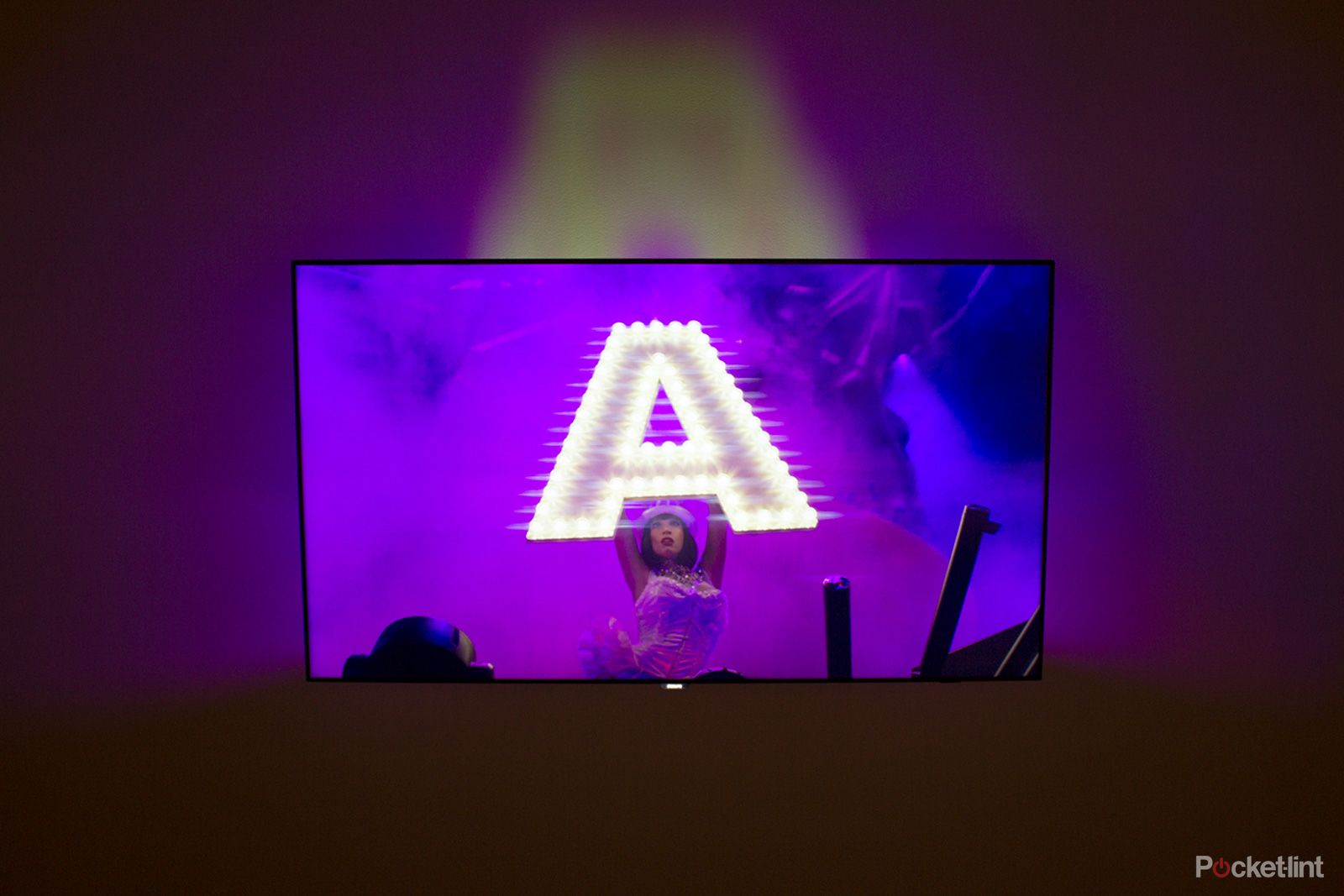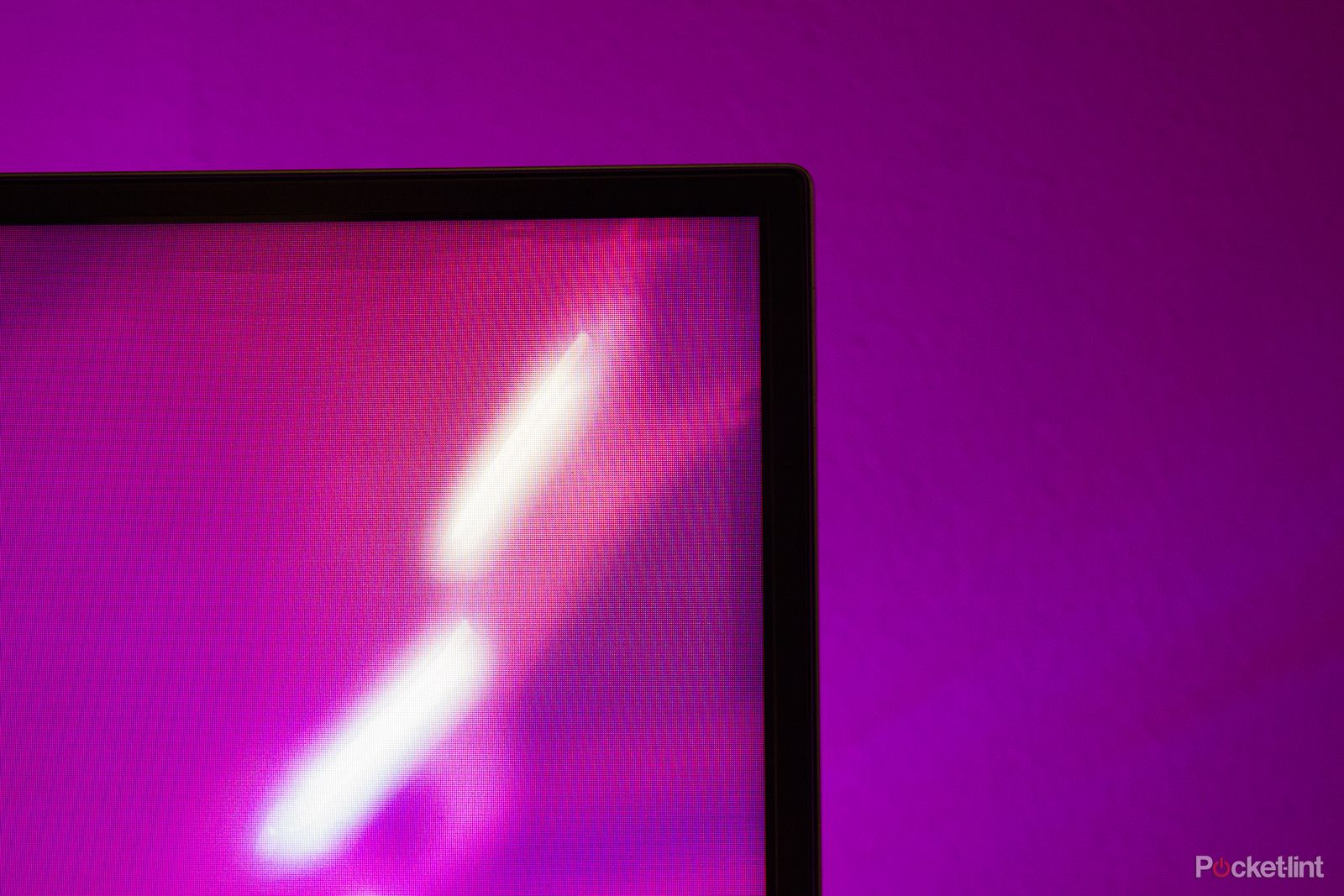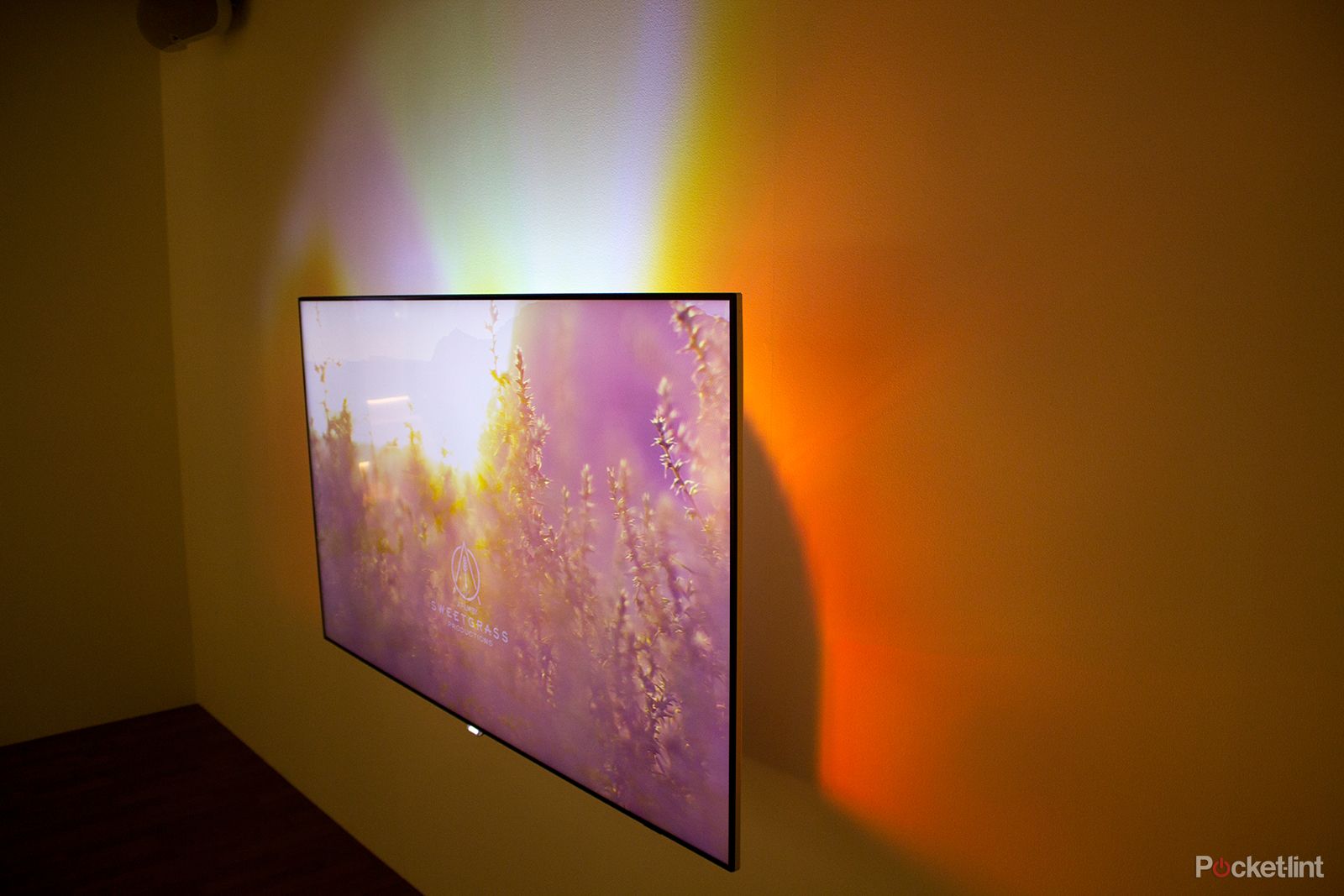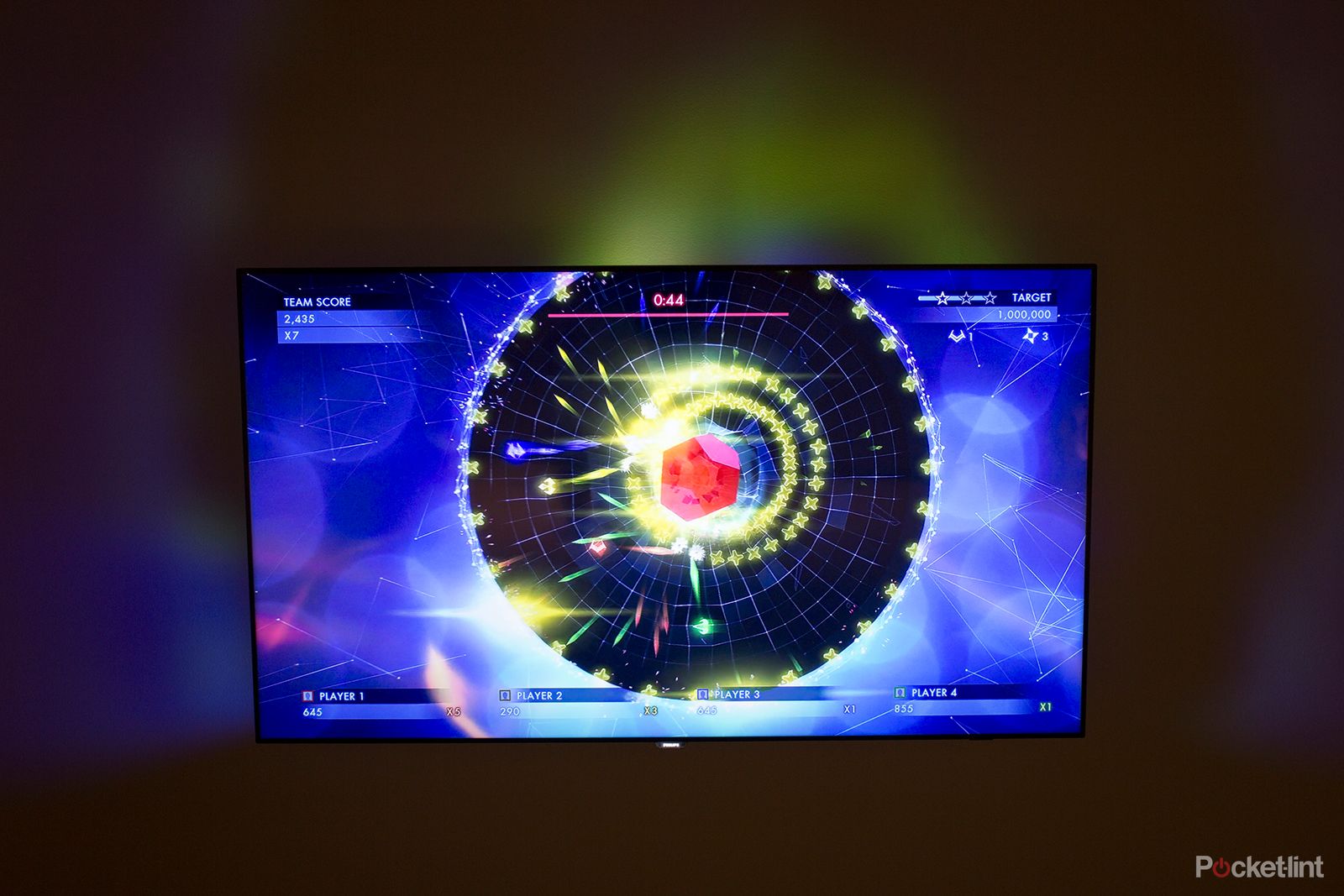Philips has announced the latest creation in its Ambilight range. Unlike it predecessors the AmbiLux uses pico projectors to extend the TV image onto the wall behind it.
Our quick take
The Philips AmbiLux certainly gives you something more for your money. If you have a big white wall to plonk the TV in front of then this could be ideal for you.
Also anyone using Philips Hue can take further advantage of that investment by hooking that up for a more immersive experience.
But in realty is this just a fad? Sure you'll need the curtains drawn to really enjoy the experience. But an experience it is. And for this reason we think it could work. While some may opt for just the TV or projector separately there is definitely something to be said for the combination experience. You may take a slight hit on the panel quality over the flagship TV, but then you've got a more immersive AmbiLight experience. It's all likely going to come down to personal preference.

Philips AmbiLux 8900 hands-on
| FOR | AGAINST |
|---|---|
|
|
|
Where the previous Ambilight effort simply created a halo of light this new creation wants to make scenes more immersive by extending them.
But with a clear 4K picture can the nine projectors extend the image beyond that bezel without it still creating a barrier?
We went hands-on to find out if the Philips AmbiLux is something to get excited about.
Designed for function
Nowadays the thin bezel of a television is almost expected from every manufacturer. Yet in most cases it's simply an aesthetic extra to make the room look good. With the AmbiLux it's a necessity as that's all that stands between a 65-inch TV image and a wall spanning projected screen.
Philips calls the stand Blade Wire and follows that super thin design on with the TV's bezel. Though judging from the display model we'd guess wall-mounting offer the optimum experience. That said the TV needed to be suitably far from the wall to offer blur, otherwise the images might appear too sharp and distracting.
The blurred image is thrown 3.5 metres around the TV in a semi-circle from the bottom up. Below the TV remains dark which we'd imagine help to avoid reflections on shiny players stored below.
Thanks to Philips smarts the TV will also work with its Hue lighting products. This means the light can be all surrounding for a really immersive experience. This is cool as it bleeds the image from TV, to wall, to room. We could see some finding this distracting but others will see it as a lot of fun.
Picture quality
The TV image, at 65-inch and 4K UHD, is undeniably good. But it's not flagship good as the panel in the AmbiLux was less highly specced than the 9600 panel. That resulted in a little light blur from the edge-lit screen. The blacks could have been blacker but the colours were punchy and were enhanced by the projector.
But it's the projectors that's we're interested in, right?
These sit at the rear of the TV, making its depth considerable larger than other screen and limiting how near to the wall the TV can sit. The light is thrown at an angle to create the arch of light and is easy to focus by reposition the screen. Generally though it's a blurred image as this adds to the immersion without being clear enough to be distracting. It just works.
For gaming, in the top-down example we saw, the extra light add an immersive edge. The same could be said for the concert video being shown with flashing light having even more impact. How it will work on day to day shows, where the same image is held for long periods could not be tested. But since this creates an atmosphere with the current AmbiLight offering we can't see why this would be any different.
Operating system and remote
Since the Philips AmbiLux runs on Android the layout is simple enough. There are also plenty of apps to choose from thanks to Android TV.
16GB of expandable memory built-in means storage should not be much of a problem. So downloading apps won't be something that needs to be considered careful but can be stock-piled for quick access instead.
The smart remote control with voice recognition makes controls easy and varied so access is straightforward. There is a built-in QWERTY keyboard so it can be used for quick typing searches. The trackpad makes cursor movement easy enough although the accelerometer method used by LG is still champ. Of course that can all be avoided with vice controls which, in our experience, worked well enough to use.
Sound quality
The slim form of modern televisions don't lend themselves well to accurate audio reproduction. Yet the AmbiLux, which seemingly is focused on light, manages to do a decent job on the audio front too.
We're in the noise of a trade show and yet still the television can be heard clearly over the din. How that translates to quality is tough to judge in this situation but it seems plenty good enough for day-to-day TV viewing. Perhaps for more movie punch, a sound system upgrade would be needed, but that's the case with most televisions.



